
Raccoon (Procyon lotor)
The black mask and ring tail of the raccoon is a familiar sight in many parts of North America including urban and suburban settings.
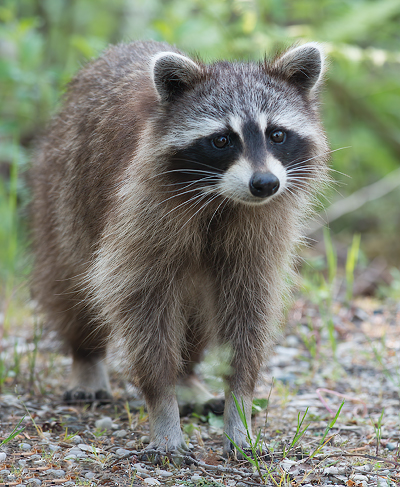 The mask may be fitting because they are well known for their campsite and garden looting. Raccoons often raid, and can make a mess of, contents in garbage cans while they are in search of food. Because of this, we now have raccoon proof garbage cans.
The mask may be fitting because they are well known for their campsite and garden looting. Raccoons often raid, and can make a mess of, contents in garbage cans while they are in search of food. Because of this, we now have raccoon proof garbage cans.
Raccoons are able to live in a wide range of habitats. The only apparent requirements are a source of water, food, and places to den. The original habitats of the raccoon are deciduous and mixed forests, but due to their adaptability they have extended their range farmlands and urban areas. For some homeowners, they can become serious pests.
Raccoons have remarkably sensitive hands, with five long, tapered fingers and long nails. They lack thumbs, so can’t grasp objects with one hand the way we can, but they use both forepaws together to lift and then acutely manipulate objects. They are also very intelligent. Raccoons are problem solvers that adapt easily to cities, suburbs, and other manmade habitats.
Raccoons are omnivores and will eat both plants and other animals. This includes fruits, berries, nuts, fish, frogs, mussels, crayfish, insects, turtles, mice, rabbits, muskrats and bird eggs.
Because raccoons are so successful and their population is rising, they are a real problem for turtles. They have an extremely good sense of smell and can easily sniff out turtle nest and devour the whole clutch.
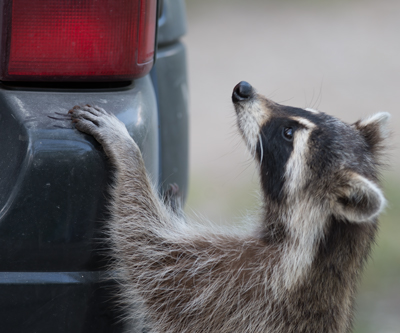 We have had our share of raccoons visiting our campsites over the years. In many parks, they are can be nightly visitors. We have had to deal with few Raccoon raids. On occasions, they show how intelligent they are as they planned their attack. There was a group that would surround our campsite and, all at once, they raided it from all sides. They knew that we would chase away one side and leave the other flank unprotected. Some encounters showed us how fearless they were. They would grab snacks right from the side tables when we sat by the campfire. Sometimes, they would be aggressive, even among each other, making horrible growls and high pitched squeals.
We have had our share of raccoons visiting our campsites over the years. In many parks, they are can be nightly visitors. We have had to deal with few Raccoon raids. On occasions, they show how intelligent they are as they planned their attack. There was a group that would surround our campsite and, all at once, they raided it from all sides. They knew that we would chase away one side and leave the other flank unprotected. Some encounters showed us how fearless they were. They would grab snacks right from the side tables when we sat by the campfire. Sometimes, they would be aggressive, even among each other, making horrible growls and high pitched squeals.
In our urban area where we live, raccoons are quite common. We see them walking along our fence at dusk and occasionally we hear them on the roof of our house as they make their rounds. They like to leave their scat on the roof of our shed and around the side of our house and their dirty footprints on our outdoor furniture.
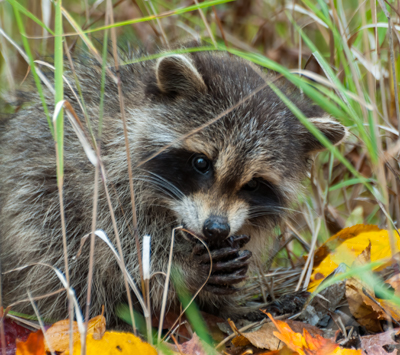 Although they may appear to be cute and friendly, they should never be feed or approached. They have incredibly sharp teeth and claws and although they likely won’t attack you, they may use them to defend themselves if they feel cornered or threatened. Even though any warm-blooded mammal can carry or contract rabies, raccoons are one of the primary carriers in North America.
They do not hibernate but do become inactive during severe winter weather. In the fall, they have to accumulate sufficient body fat reserves to sustain them during the winter denning. In northern climate the raccoon lives on its body fat reserve during the winter, but farther south it continues to hunt for food year-round.
Although they may appear to be cute and friendly, they should never be feed or approached. They have incredibly sharp teeth and claws and although they likely won’t attack you, they may use them to defend themselves if they feel cornered or threatened. Even though any warm-blooded mammal can carry or contract rabies, raccoons are one of the primary carriers in North America.
They do not hibernate but do become inactive during severe winter weather. In the fall, they have to accumulate sufficient body fat reserves to sustain them during the winter denning. In northern climate the raccoon lives on its body fat reserve during the winter, but farther south it continues to hunt for food year-round.
Raccoons generally have one litter per year, which is usually born in late spring or early summer. One litter may contain between three and five young. The family group, which consists of the adult female and young, is quite sociable, hunting for food together during the night and denning together during the day. The mother teaches her young to climb, hunt, and swim during their first summer. The family remains together until the mother has her next litter, usually the following spring.
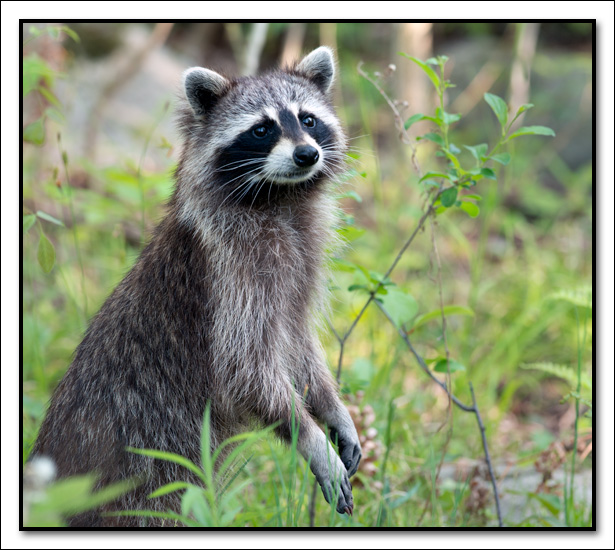
Raccoons are mostly nocturnal, but they do occassionally venture out in the daytime.
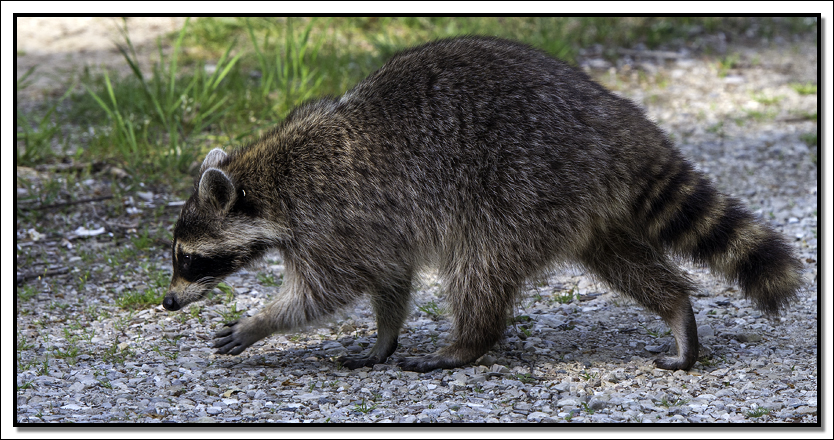
Raccoons are easy to identify with their ringed tail, black mask and long fingers. They are also obvious with their hunchbacks making thems easy to identify just by their silhouettes.
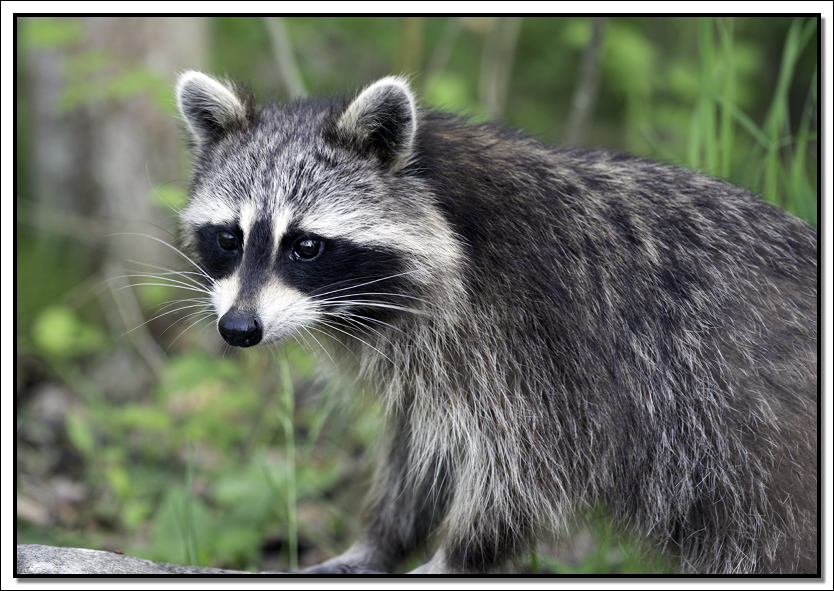
Raccoons are among the rare species that have actually benefited from the spread of humans.
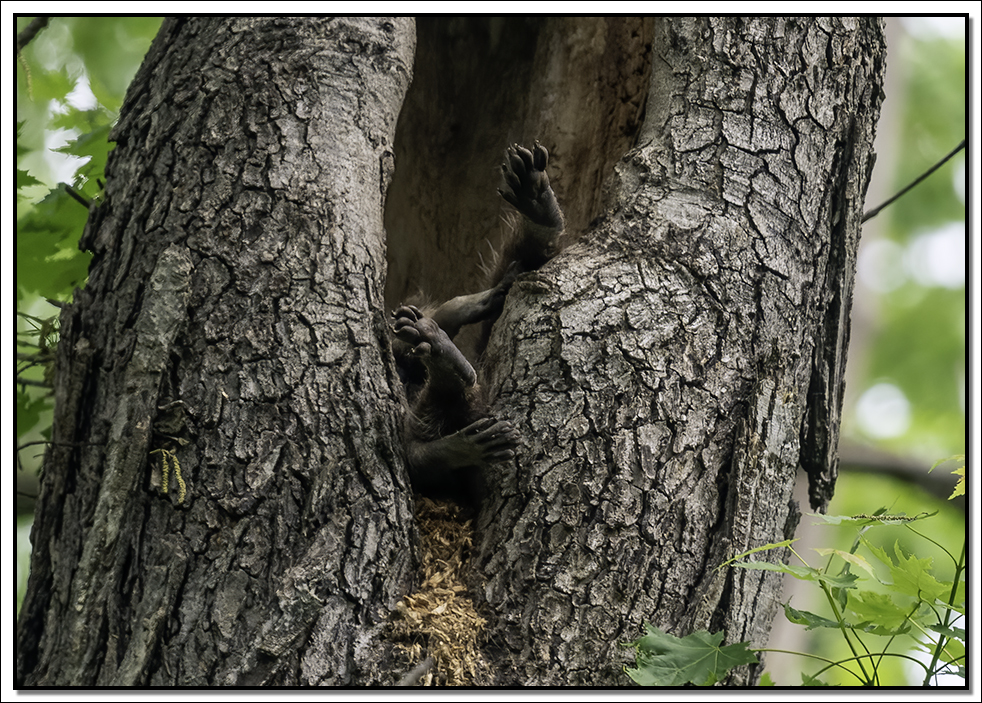
Raccoons can be quite comical like this guy sleeping the day away.
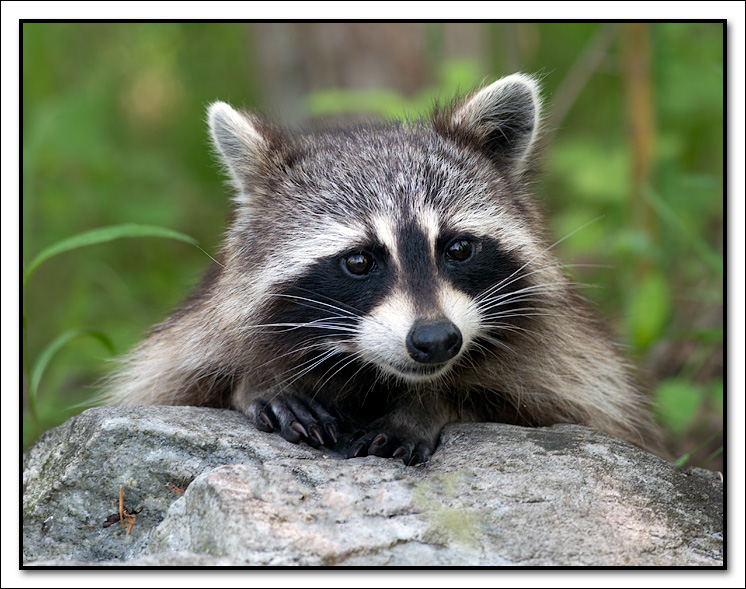
Raccoons have a heightened sense of smell that helps them move around at night, but they mostly rely on their sense of touch to locate food.
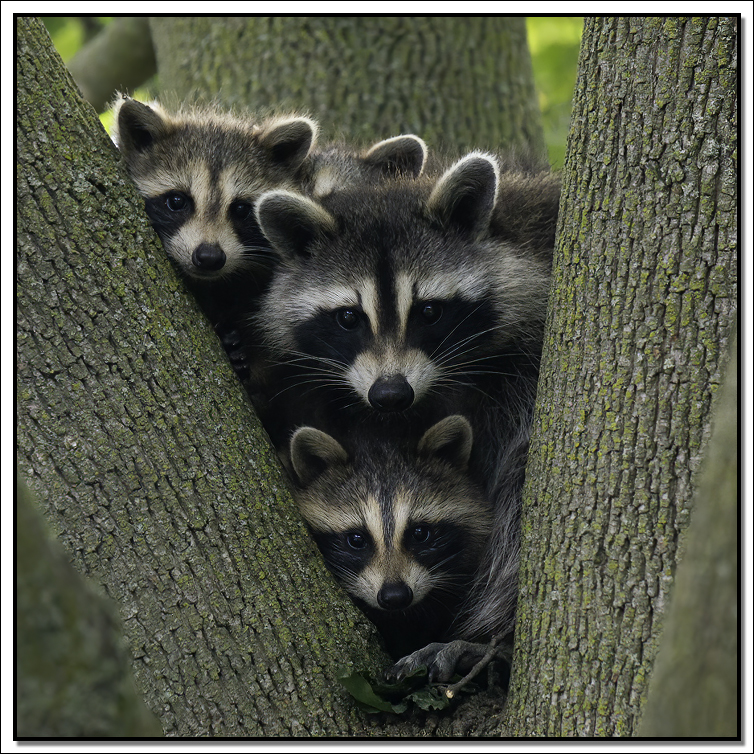
Raccoons stay in family units with 3 to 5 pups lead by a very dedicated mother
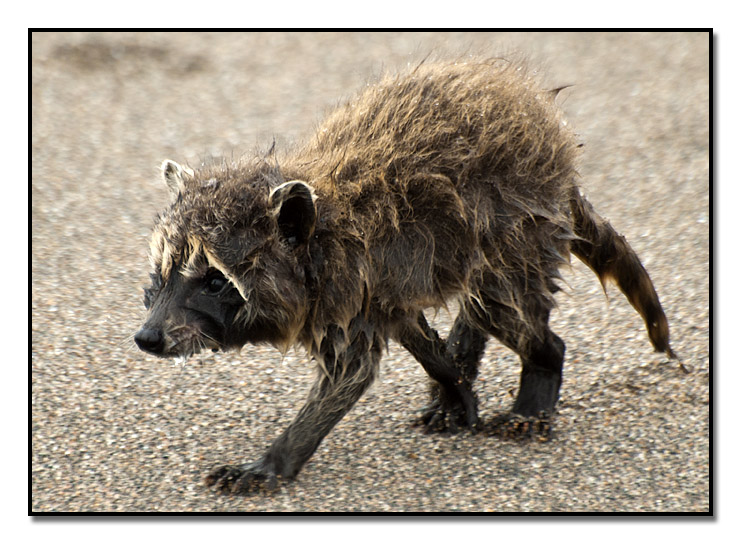
We came across this lone juvenile raccoon walking along the beach in Point Pelee. He must have been seperated from the group. Not sure what his chances of survival was.